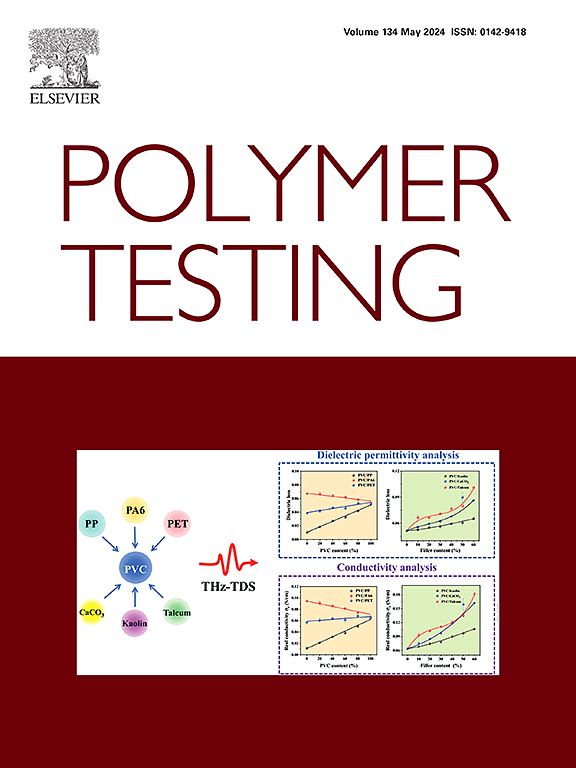基于pdm的芯片上器官微流控系统内毒素污染控制
IF 5
2区 材料科学
Q1 MATERIALS SCIENCE, CHARACTERIZATION & TESTING
引用次数: 0
摘要
在过去的十年中,器官芯片(OoC)系统作为复制各种器官生理微环境的先进平台受到了极大的关注。这些微流体装置允许在微尺度下进行体外细胞培养,整合传统细胞培养模型无法复制的生物物理和生化线索。其功能的一个关键方面是灭菌,这是消除细菌污染所必需的。然而,传统的灭菌方法往往不能去除细菌内毒素,如革兰氏阴性菌的脂多糖(LPS)。这些内毒素是有效的热原,可以诱导发烧并深刻改变细胞行为,从而影响OoC模型的可靠性和准确性。对于用疏水材料(如聚二甲基硅氧烷(PDMS))制造的OoC系统来说,这个问题尤其具有挑战性,因为聚二甲基硅氧烷容易吸附内毒素。在这项研究中,我们开发了一种分析方法,使用鲎试剂(Limulus Amoebocyte Lysate, LAL)测定法来量化基于pdm的微流体装置中的内毒素水平。我们对两组设备进行了测试:一组使用的是已经使用了一年多的PDMS(“1岁的PDMS”),另一组使用的是刚刚使用了一个月的PDMS(“1个月的PDMS”)。我们还比较了氧等离子体处理后1小时和1周的污染水平。储存时间(从密封到检测内毒素的时间)对污染程度至关重要,这表明氧等离子体处理可以有效地减少PDMS表面的内毒素。FTIR分析也证实了这一结果。我们的研究结果强调了在生产OoC系统时严格控制污染的关键需要,以确保它们不仅是无菌的,而且是无内毒素的。实现这一双重标准对于维持生物医学研究和治疗开发中这些创新平台的可靠性和性能至关重要。本文章由计算机程序翻译,如有差异,请以英文原文为准。
Controlling endotoxin contamination in PDMS-based microfluidic systems for organ-on-chip technologies
In the past decade, organ-on-chip (OoC) systems have gained significant attention as advanced platforms for replicating the physiological microenvironments of various organs. These microfluidic devices allow in vitro cell cultures at the microscale, integrating biophysical and biochemical cues that traditional cell culture models cannot reproduce. A critical aspect of their functionality is sterilization, which is necessary to eliminate bacterial contamination. However, conventional sterilization methods often fail to remove bacterial endotoxins, such as lipopolysaccharides (LPS) from Gram-negative bacteria. These endotoxins are potent pyrogens that can induce fever and profoundly alter cellular behavior, thereby compromising the reliability and accuracy of OoC models. This issue is particularly challenging for OoC systems fabricated with hydrophobic materials like polydimethylsiloxane (PDMS), which readily adsorb endotoxins.
In this study, we developed an analytical method to quantify endotoxin levels in PDMS-based microfluidic devices using a Limulus Amoebocyte Lysate (LAL) assay. We tested two groups of devices: those made with PDMS from a batch opened for over a year (“1-year-old PDMS”), and others made with PDMS from a batch opened for just one month (“1-month-old PDMS”). We also compared contamination levels after 1 h and 1 week post-sealing by oxygen plasma treatment. Storage time (period from sealing to testing for endotoxin) displayed critical for contamination level, revealing that oxygen plasma treatment is effective in reducing endotoxin from PDMS surfaces. This result was also confirmed by FTIR analysis.
Our findings emphasize the critical need for rigorous contamination control in the manufacturing of OoC systems to ensure they are not only sterile but also endotoxin-free. Achieving this dual standard is essential for maintaining the reliability and performance of these innovative platforms in biomedical research and therapeutic development.
求助全文
通过发布文献求助,成功后即可免费获取论文全文。
去求助
来源期刊

Polymer Testing
工程技术-材料科学:表征与测试
CiteScore
10.70
自引率
5.90%
发文量
328
审稿时长
44 days
期刊介绍:
Polymer Testing focuses on the testing, analysis and characterization of polymer materials, including both synthetic and natural or biobased polymers. Novel testing methods and the testing of novel polymeric materials in bulk, solution and dispersion is covered. In addition, we welcome the submission of the testing of polymeric materials for a wide range of applications and industrial products as well as nanoscale characterization.
The scope includes but is not limited to the following main topics:
Novel testing methods and Chemical analysis
• mechanical, thermal, electrical, chemical, imaging, spectroscopy, scattering and rheology
Physical properties and behaviour of novel polymer systems
• nanoscale properties, morphology, transport properties
Degradation and recycling of polymeric materials when combined with novel testing or characterization methods
• degradation, biodegradation, ageing and fire retardancy
Modelling and Simulation work will be only considered when it is linked to new or previously published experimental results.
 求助内容:
求助内容: 应助结果提醒方式:
应助结果提醒方式:


